-
Table of Contents
The Influence of Trip-Hop on Contemporary Music Genres
The influence of trip-hop on contemporary music genres cannot be overstated. This unique genre, which emerged in the 1990s, has had a profound impact on the music industry and has shaped the sound of modern music in many ways.
One of the most significant effects of trip-hop on contemporary music genres is its fusion of different musical styles. Trip-hop combines elements of hip-hop, electronic music, and various other genres to create a distinct sound that is both captivating and innovative. This blending of different styles has inspired countless artists to experiment with their own music, leading to the emergence of new genres and subgenres.
Furthermore, trip-hop has also played a crucial role in the development of electronic music. The genre’s heavy use of electronic instruments and production techniques has influenced the way electronic music is created and produced. Many electronic artists have drawn inspiration from trip-hop’s atmospheric and downtempo sound, incorporating similar elements into their own music.
In addition to its impact on electronic music, trip-hop has also influenced the world of hip-hop. The genre’s incorporation of electronic beats and atmospheric soundscapes has inspired hip-hop artists to experiment with new sounds and textures. This has led to the emergence of subgenres such as “experimental hip-hop” and “alternative hip-hop,” which incorporate trip-hop elements into their music.
Moreover, trip-hop’s influence extends beyond the realm of music. The genre’s moody and introspective lyrics have resonated with listeners and have influenced the themes and subject matter explored in contemporary music. Many artists have been inspired by trip-hop’s introspective nature, using it as a platform to express their own emotions and experiences.
Furthermore, trip-hop’s influence can also be seen in the visual arts. The genre’s dark and atmospheric sound has inspired visual artists to create artwork that complements the mood and tone of trip-hop music. This has led to the emergence of a unique visual aesthetic that is often associated with trip-hop.
Additionally, trip-hop has also had a significant impact on popular culture. The genre’s popularity in the 1990s helped to shape the cultural landscape of the time, influencing fashion, film, and even advertising. The distinctive sound and style of trip-hop became synonymous with a certain era, and its influence can still be felt in contemporary popular culture.
In conclusion, the influence of trip-hop on contemporary music genres is undeniable. This unique genre has shaped the sound of modern music in many ways, from its fusion of different musical styles to its impact on electronic and hip-hop music. Furthermore, trip-hop’s influence extends beyond music and can be seen in the visual arts and popular culture. Its moody and introspective nature has resonated with listeners and has inspired countless artists to experiment with their own music. Overall, trip-hop has left an indelible mark on modern culture and continues to inspire and influence artists across various creative disciplines.
Exploring the Impact of Trip-Hop on Fashion and Visual Arts
Trip-hop, a genre of music that emerged in the 1990s, has had a profound impact on modern culture. While its influence on music is well-documented, its effects on other art forms, such as fashion and visual arts, are often overlooked. In this section, we will explore how trip-hop has shaped these creative realms and left an indelible mark on modern culture.
One of the most notable ways in which trip-hop has influenced fashion is through its distinctive aesthetic. Characterized by its moody and atmospheric soundscapes, trip-hop has inspired designers to create clothing that reflects this unique vibe. Dark, muted colors, oversized silhouettes, and a sense of urban cool are all hallmarks of trip-hop-inspired fashion.
Moreover, trip-hop’s fusion of different musical genres, such as hip-hop, electronic, and jazz, has encouraged designers to experiment with mixing different styles in their collections. This eclecticism is evident in the use of unexpected combinations of fabrics, textures, and patterns. By breaking traditional fashion rules, trip-hop has opened up new possibilities for self-expression and creativity in the world of fashion.
In addition to fashion, trip-hop has also had a significant impact on visual arts. The genre’s introspective and introspective nature has inspired artists to explore similar themes in their work. Many visual artists have drawn inspiration from trip-hop’s brooding and melancholic soundscapes, creating pieces that evoke a similar emotional depth.
One way in which trip-hop has influenced visual arts is through the use of multimedia installations. Artists have incorporated trip-hop music into their installations, creating immersive experiences that combine sound, visuals, and physical elements. These installations often aim to evoke a sense of introspection and contemplation, mirroring the introspective nature of trip-hop music.
Furthermore, trip-hop’s emphasis on sampling and remixing has influenced visual artists to adopt similar techniques in their work. Just as trip-hop artists sample and manipulate existing musical elements to create something new, visual artists have started to incorporate found objects, images, and materials into their artwork. This approach allows them to create layered and textured pieces that challenge traditional notions of art and invite viewers to question the boundaries of creativity.
The impact of trip-hop on fashion and visual arts extends beyond the creative realm. It has also influenced the way we consume and experience these art forms. With the rise of digital platforms and social media, trip-hop has found a new home in the online world. Fashion bloggers and influencers often incorporate trip-hop-inspired looks into their content, showcasing how the genre has permeated popular culture.
Similarly, visual artists have embraced digital platforms to share their work with a wider audience. Online galleries and social media platforms have become spaces for artists to showcase their trip-hop-inspired pieces, connecting with fans and fellow artists from around the world. This digital landscape has allowed trip-hop to reach new audiences and continue to shape modern culture.
In conclusion, trip-hop’s impact on modern culture extends beyond music. Its influence on fashion and visual arts is undeniable, shaping the way we dress, create, and experience art. From its distinctive aesthetic to its introspective themes, trip-hop has left an indelible mark on these creative realms, pushing boundaries and inspiring new forms of self-expression. As we continue to explore the effects of trip-hop on modern culture, it is clear that its influence will continue to resonate for years to come.
Analyzing the Sociocultural Significance of Trip-Hop in Modern Society
The genre of trip-hop emerged in the 1990s as a fusion of electronic music, hip-hop, and various other genres such as jazz and soul. It gained popularity quickly and has since had a profound impact on modern culture. This article aims to analyze the sociocultural significance of trip-hop in modern society.
One of the most notable effects of trip-hop on modern culture is its influence on music production and the evolution of electronic music. Trip-hop introduced a new sound that was characterized by its downtempo beats, atmospheric textures, and haunting melodies. This unique combination of elements challenged the traditional boundaries of music genres and paved the way for experimentation and innovation in electronic music.
Furthermore, trip-hop played a crucial role in shaping the music industry by introducing a new aesthetic and sound. Its fusion of different genres attracted a diverse audience and broadened the horizons of listeners. This genre appealed to those who sought a more introspective and atmospheric experience, as opposed to the high-energy beats of mainstream music. As a result, trip-hop became a subculture in itself, with its own fashion, art, and lifestyle choices.
In addition to its impact on music, trip-hop also influenced visual arts and fashion. The genre’s dark and moody atmosphere inspired artists to create visually captivating and thought-provoking works. The album covers of trip-hop artists often featured abstract and surreal imagery, reflecting the genre’s introspective nature. This aesthetic spilled over into fashion, with artists and fans adopting a style that was characterized by dark colors, oversized clothing, and a sense of individuality.
Moreover, trip-hop had a significant impact on the cultural and social landscape of the time. The genre emerged during a period of social and political unrest, and its introspective and melancholic themes resonated with many individuals. Trip-hop became a form of escapism for those seeking solace from the chaos of the world. Its introspective lyrics and atmospheric soundscapes provided a space for reflection and contemplation.
Furthermore, trip-hop played a role in challenging societal norms and breaking down barriers. The genre attracted a diverse range of artists, many of whom were women and people of color. This diversity brought new perspectives and voices to the forefront of the music industry, challenging the predominantly male and white narrative. Trip-hop became a platform for marginalized communities to express themselves and share their experiences.
In conclusion, trip-hop has had a profound impact on modern culture. Its unique sound and fusion of genres revolutionized music production and influenced the evolution of electronic music. The genre’s aesthetic and style spilled over into visual arts and fashion, creating a subculture that embraced individuality and introspection. Moreover, trip-hop provided a space for reflection and contemplation during a time of social and political unrest. It challenged societal norms and gave a voice to marginalized communities. Overall, trip-hop’s sociocultural significance cannot be understated, as it continues to shape and inspire modern society.







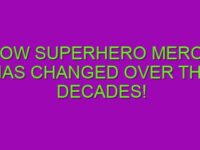
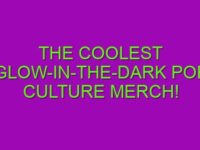



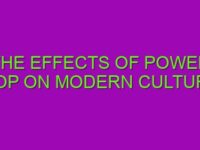
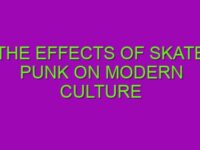
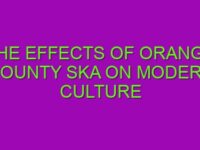




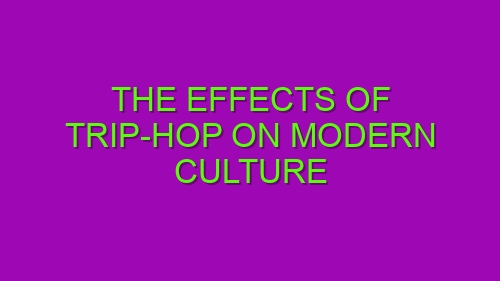
0 Comments